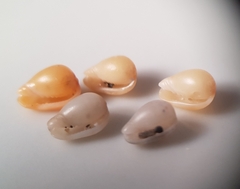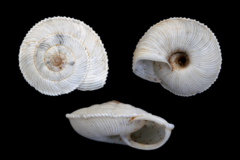Rough cockle
Acanthocardia tuberculata
Acanthocardia tuberculata, commonly known as the Rough Cockle or locally referred to as berberecho rugoso in the Comunidad Valenciana, is a species of bivalve mollusk belonging to the family Cardiidae. This marine organism can often be found along the sandy and muddy substrates of the Mediterranean coast.
Characteristics:
- Shell Appearance: Acanthocardia tuberculata is characterized by its robust, oval-shaped shell which can range from cream to brownish hues. Its surface is adorned with strong radial ribs, each dotted with pronounced, knobby tubercles giving it a rough texture.
- Size: The size of the shell typically ranges between 5 to 7 centimeters in length, although larger specimens can be found.
- Habitat: The Rough Cockle thrives in shallow coastal waters, often buried in the sand or mud, making it well-suited to the varied seabeds found along the Valencian coastline.
- Diet: Like other bivalves, it is a filter feeder, drawing in water through its siphons to extract plankton and other organic particles.
Ecological Importance:
Acanthocardia tuberculata plays a significant role in the marine ecosystem. Its presence contributes to the benthic environment by providing a habitat for smaller marine organisms. It also serves as a food source for predators such as birds and fish.
Culinary Uses:
In the Comunidad Valenciana, the Rough Cockle holds culinary value. It is harvested and prepared in various seafood dishes, treasured for its delicate flavor that reflects the richness of the Mediterranean Sea.
This fascinating mollusk, with its unique appearance and ecological value, adds to the biodiversity of the Valencian marine landscape, offering opportunities for both scientific study and culinary exploration.







